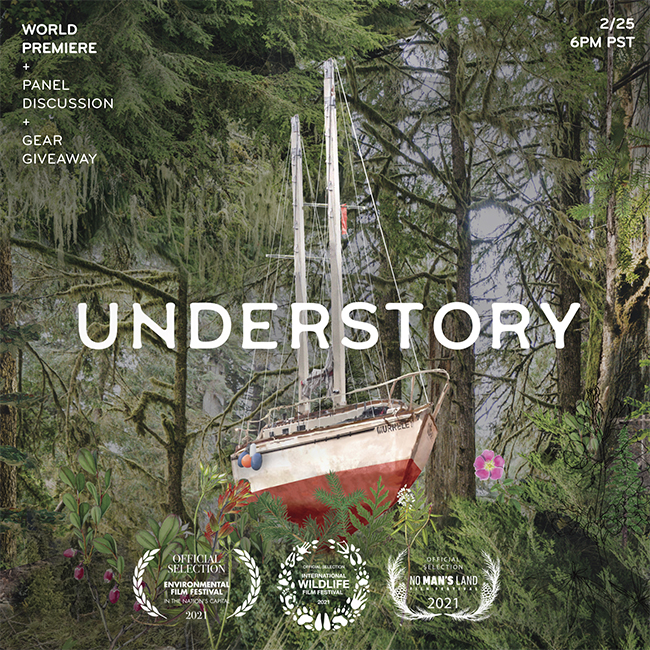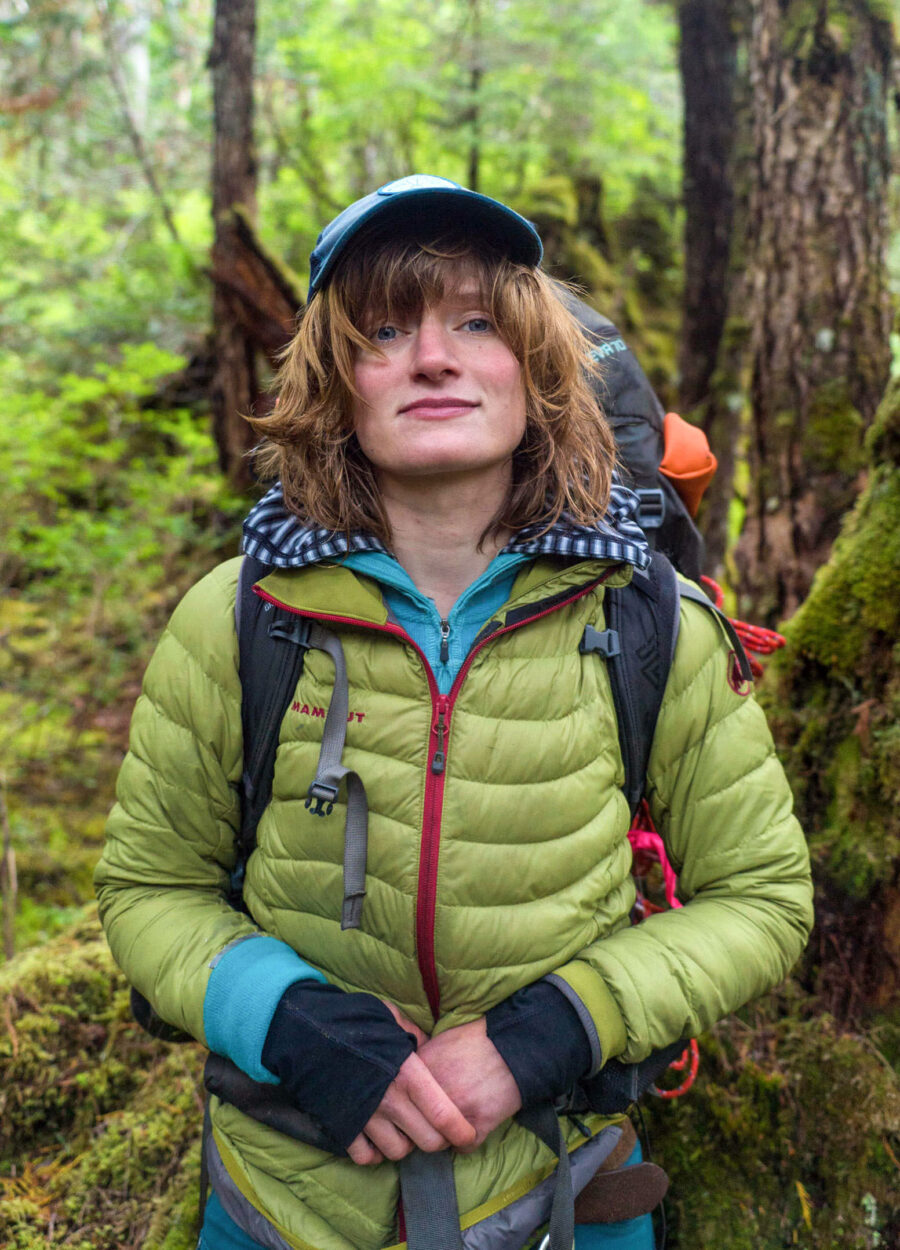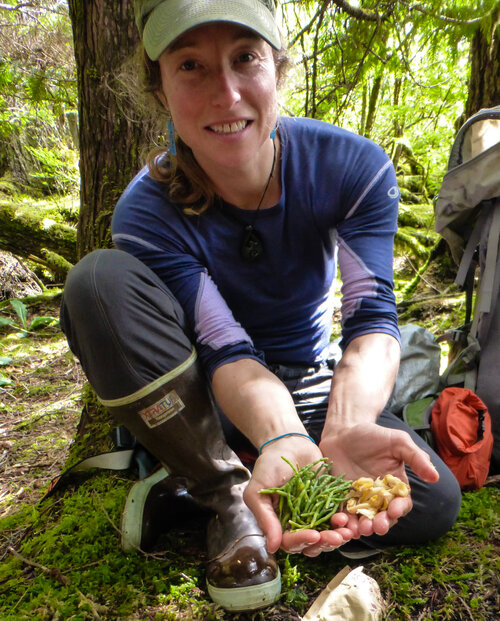
A documentary film about the impacts of logging on Southeast Alaska’s Prince of Wales Island called Understory is starting to make its way through film festivals. As KFSK’s Angela Denning reports, the film features a resident of the small Prince of Wales community of Point Baker.
Elsa Sebastian is the narrator and co-producer of Understory. In the film, she sails her boat with a few friends around Prince of Wales and backpacks into the forest. Sebastian says she isn’t anti-logging but she doesn’t like industrial clear cutting. This winter, she’s been apprenticing in Sitka learning how to repurpose salvaged, old growth timber into furniture.
“As a local person, the way I see it, is that we’re not just stripping the land of biological abundance when we clear cut it, we’re also removing our reserve of really valuable timber, really valuable trees that could be used carefully and locally forever,” she said.
Sebastian grew up on P.O.W. in a home without running water or electricity. She commercial fished with her parents. The forest was part of her identity. As an adult she started to investigate logging happening in her backyard. Industrial-scale logging began on the island in the 1950s and expanded in the second half of the last century. Now the island supports the region’s only remaining mid-sized sawmill where some of the trees cut are still processed.
Sebastian shifted from power trolling in Southeast to gillnetting in Bristol Bay to spend more time on what she calls “ground truthing” or studying the land by personal observation.
“It’s basically going to the land to see for yourself if what you’ve been told is true,” she said.

The film was also prompted by the exemption of the Tongass National Forest from a nationwide rule prohibiting new logging in undeveloped areas. Sebastian recruited a few other women to sail around the island with her, visiting those places.
Natalie Dawson is a wildlife biologist who has studied mammals in the Tongass for 20 years. She spent “months backpacking on Prince of Wales, and Kuiu, and Admiralty,” trapping them, she said.
Dawson was interested in seeing P.O.W. from the water; from the outside looking in.
“I’m used to being literally nose down in the lichen and moss and the downed trees and that kind of allowed me the perspective of pulling back and seeing the island as a whole place,” Dawson said.
Also joining them was Mara Menahan, a wildlife artist who specializes in painting plants.
The trio had traveled together a few years earlier, spending a month bushwhacking through areas of P.O.W. Sebastian says, at times, if felt like they were just animals navigating through very difficult terrain.
“When you’re carrying a heavy backpack and you come up to an edge of an old clear cut and you realize you’re going to have to crawl through it, it’s really challenging and it shifts your opinion about what that clear cut means,” said Sebastian.
This trip by sail boat included two people filming. It was Sebastian’s first time venturing into advocating for the Tongass in a professional way but she thought the message was important. She says a lot of people think that you can cut the big trees down and little ones will replace them.
“That logic makes sense in a way but it’s not true,” she said. “I mean, we’ve tried to move through a 70-year-old clear cut and felt like we were going to break our legs the entire time. It’s pretty scary to walk through old clear cuts whether you’re a human or a black bear or a deer.”
From her observations, Dawson believes logging impacts mammals on the Tongass but she says funding for scientific research is so limited it’s hard to quantify it.

For Sebastian, she says she didn’t really get what industrial logging was until she spent a few months walking in the woods.
“I’ve been fishing off of Prince of Wales my entire life, I grew up on a fishing boat and we used to fish down by Craig,” Sebastian said. “And when you look at the land, I mean, there’s different shades of green but it all looks green. You know, an old clear cut that’s grown back for 50 years, it looks green from the water. But when you get into that forest, it doesn’t feel alive.”
The film Understory also touches on other themes: the federal subsidies to keep logging going and the carbon sink the forest provides to combat climate change. It also features Marina Anderson, with the Organized Village of Kasaan talking about her tribe’s history of logging on the island.
Funders for the film included Patagonia, The Wilderness Society, Audobon Alaska, Peak Design, and Sitka Salmon Shares.
The coronavirus pandemic has complicated local screenings of the film. Sebastian says they will come up with a plan even if it’s an outdoor showing. In the meantime it’s getting shown at film festivals throughout the country.
You can find out more about the documentary Understory by going to its website, laststands.org.











